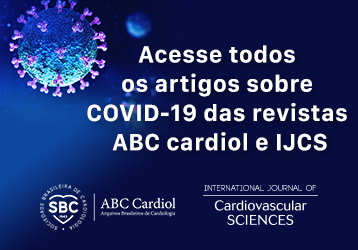Volume 33, Nº 3, Maio e Junho 2020
DOI: https://doi.org/10.36660/ijcs.20180078
ARTIGO ORIGINAL
Evaluation of Cardiovascular Risk in Hypertensive Individuals Attending a Primary Health Care Center
Tiago Ricardo Moreira
Luana Vieira Toledo
Érica Toledo Mendonça
Renata Maria Colodette
Luciana Saraiva Silva
Rosângela Minardi Mitre Cotta

Abstract
Background: Cardiovascular risk (CVR) stratification has traditionally been used as a strategy for the prevention of cardiovascular diseases in asymptomatic people.
Objective: To identify the CVR in hypertensive patients attending a primary health care center, using the Framingham risk score, and to evaluate possible associations and correlations with sociodemographic, clinical and laboratory variables not included in this score. This cross-sectional study was conducted with hypertensive patients treated in a primary health care center in Brazil (n = 166).
Methods: Data collection, administration of questionnaires, anthropometric measurements and laboratory tests were performed from July to August 2013. Multiple linear regression was used in the analysis. A two-tailed p-value < 0.05 was considered significant.
Results: High CVR was independently associated with male sex (B = 8.73; 95%CI: 6.27: 11.19), high serum levels of total cholesterol (B = 0.05; IC95%: 0.02: 0.08), number of drugs used (B = 0.55; 95%Ci: 0.12: 0.98) and a low glomerular filtration rate (GFR) (B = -0.11; 95%CI: -0.18 : -0.03).
Conclusion: The results of this study reinforce the importance of continuous and longitudinal care practices directed to hypertensive patients aiming at early detection of risk factors and appropriate intervention to improve the prognosis of this population. (Int J Cardiovasc Sci. 2020; 33(3):217-224)
Keywords: Cardiovascular Diseases/mortality; Risk Factors; Hypertension; Life Style; Treatment Adherence and Compliance; Sedentarism; Obesity; Prevention and Control.











